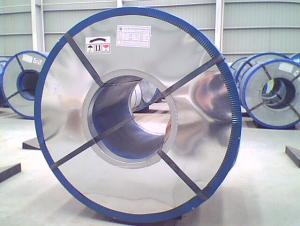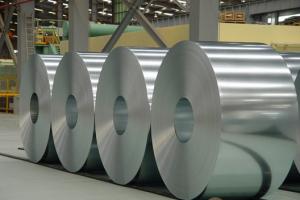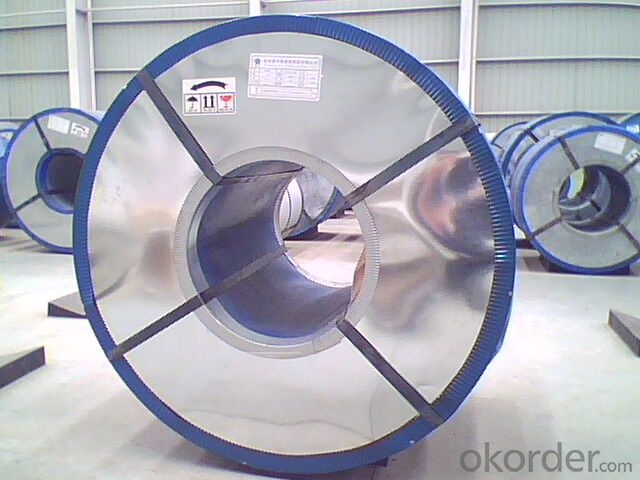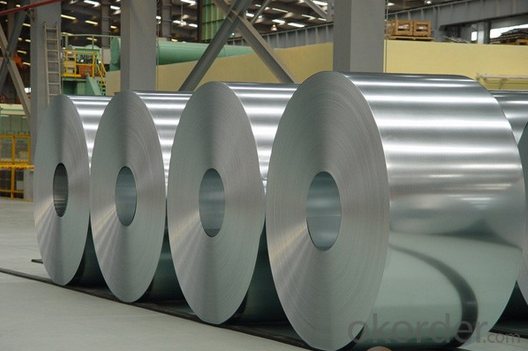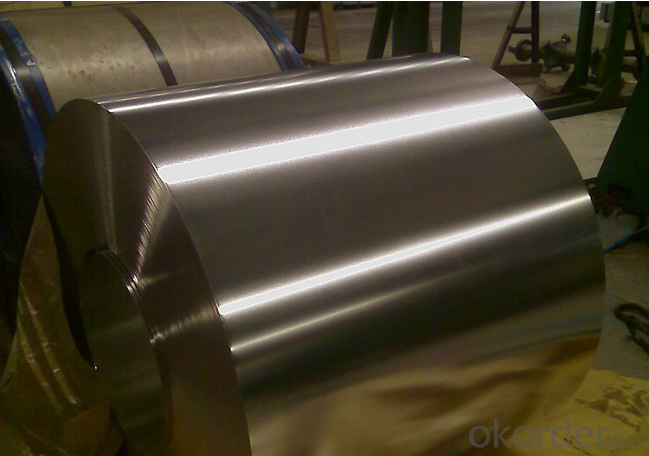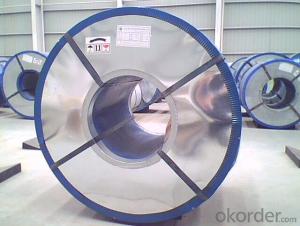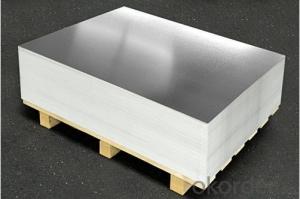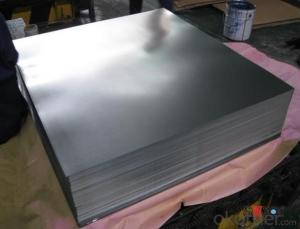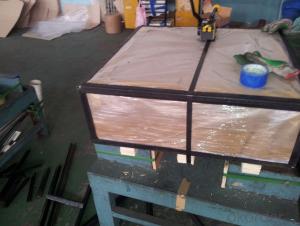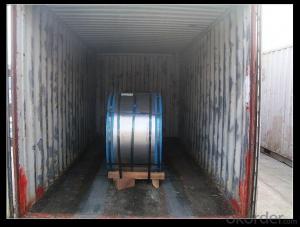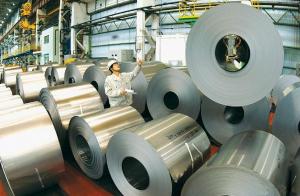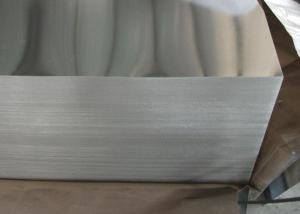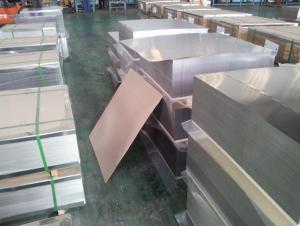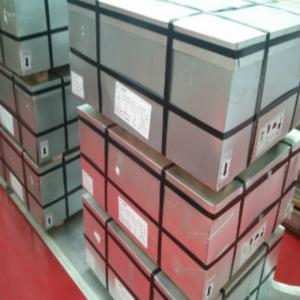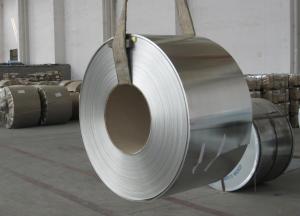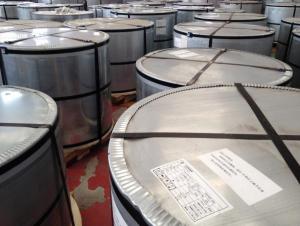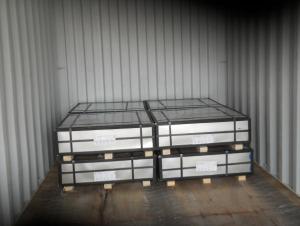Electrolytic Tin Plate Coils and Sheets for Chemical Can Packaging
- Loading Port:
- China Main Port
- Payment Terms:
- TT or LC
- Min Order Qty:
- -
- Supply Capability:
- 30000 m.t./month
OKorder Service Pledge
OKorder Financial Service
You Might Also Like
1.Structure of Electrolytic Tin Plate Description
Electrolytic Tin Plate Coils and Sheets for Foods Metal Packaging, is one thin steel sheet with a coating of tin applied by electrolytic deposition. Tinplate made by this process is essentially a sandwich in which the central core is strip steel. This core is cleaned in a pickling solution and then fed through tanks containing electrolyte, where tin is deposited on both sides. As the strip passes between high-frequency electric induction coils, it is heated so that the tin coating melts and flows to form a lustrous coat.
2.Main Features of the Electrolytic Tin Plate Coils and Sheets for Chemical Can Packaging
Appearance – Electrolytic Tin Plate is characterized by its beautiful metallic luster. Products with various kinds of surface roughness are produced by selecting the surface finish of the substrate steel sheet.
Paintability and printability – Electrolytic Tin Plates have excellent paintability and printability. Printing is beautifully finished using various lacquers and inks.
Formability and strength – Electrolytic Tin Plates have got very good formability and strength. By selecting a proper temper grade, appropriate formability is obtained for different applications as well as the required strength after forming.
Corrosion resistance – Tinplate has got good corrosion resistance. By selecting a proper coating weight, appropriate corrosion resistance is obtained against container contents. Coated items should meet 24 hour 5 % salt spray requirement.
Solderability and weldability – Electrolytic Tin Plates can be joined both by soldering or welding. These properties of tinplate are used for making various types of cans.
Hygienic – Tin coating provides good and non toxic barrier properties to protect food products from impurities, bacteria, moisture, light and odours.
Safe – Tinplate being low weight and high strength makes food cans easy to ship and transport.
3.Electrolytic Tin Plate Coils and Sheets for Chemical Can Packaging Images
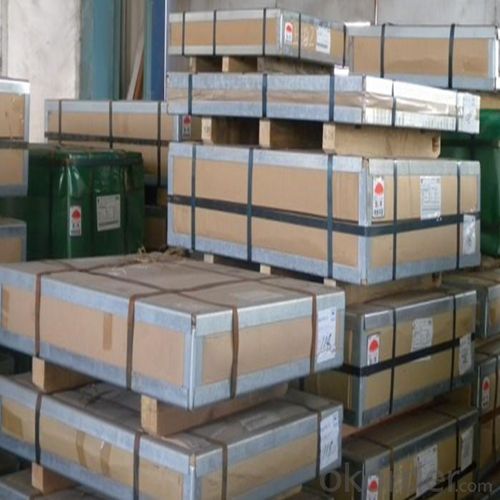
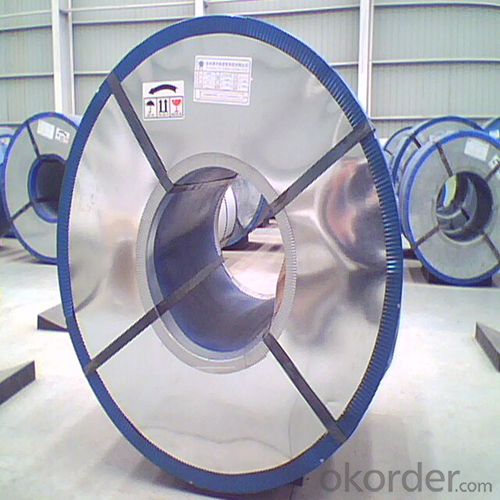
4.Electrolytic Tin Plate Coils and Sheets for Chemical Can Packaging Specification
Standard | ISO 11949 -1995, GB/T2520-2000,JIS G3303,ASTM A623, BS EN 10202
|
Material | MR,SPCC |
Thickness | 0.15mm - 0.50mm |
Width | 600mm -1150mm |
Temper | T1-T5 |
Annealing | BA & CA |
Coil Inner Diameter | 508mm |
Weight | 6-10 tons/coil 1~1.7 tons/sheets bundle |
Passivation | 311 |
Oil | DOS |
Surface | Finish,bright,stone,matte,silver |
5.FAQ of Electrolytic Tin Plate Coils and Sheets for Chemical Can Packaging
- How are the Electrolytic Tin Plates specified?
The Electrolytic Tin Plates are specified as per the steel base, extent of tempering, the coating weight, annealing method and the surface finish.
- How many types there are for base steels?
The base steels are of three types: Type MR, L, D SPCC
- Q: How is tinplate coated for paint cans?
- Tinplate is coated for paint cans through a process called electrolytic tin coating, where a thin layer of tin is applied to the surface of the steel sheet. This coating provides protection against corrosion and ensures the paint cans are suitable for storing various types of paints and coatings.
- Q: What are the different ways to recycle tinplate containers?
- There are several ways to recycle tinplate containers. One way is to separate the tinplate from other materials, such as plastic or paper, and then melt it down to be reused for manufacturing new tinplate products. Another method involves crushing the containers to reduce their size, which makes it easier to transport and process them at recycling facilities. Additionally, tinplate containers can be repurposed for various uses, such as storage or organization, before eventually being recycled.
- Q: How does tinplate perform in high-temperature applications?
- Tinplate performs well in high-temperature applications due to its excellent heat resistance. It can withstand elevated temperatures without warping or deforming, making it suitable for various industrial and food processing operations that involve heat.
- Q: What are the different types of tinplate seams?
- There are three main types of tinplate seams: lap seam, double seam, and open seam.
- Q: How does tinplate contribute to the overall recyclability of packaging?
- Tinplate contributes to the overall recyclability of packaging by being highly recyclable itself. It can be easily separated from other materials during the recycling process and recycled into new tinplate products. This helps reduce the amount of waste that ends up in landfills and promotes a more sustainable and circular economy.
- Q: Can tinplate be used for packaging of flammable liquids?
- No, tinplate is not suitable for packaging flammable liquids as it is not resistant to corrosion and may react with the liquid, potentially causing leaks or fire hazards.
- Q: Can tinplate be used for musical instruments?
- Yes, tinplate can be used for musical instruments. Tinplate is often used in the construction of various musical instruments, such as harmonicas or tambourines, due to its durability, flexibility, and ability to produce unique sounds.
- Q: What are the different methods of disposing of tinplate packaging?
- There are several methods for disposing of tinplate packaging. The most common method is recycling, where the tinplate is collected and processed to be used in the manufacturing of new products. Another option is repurposing, where the packaging is creatively transformed into new items or used for storage purposes. Additionally, tinplate packaging can be disposed of in landfills, although this is the least environmentally friendly option. It is important to check local regulations and recycling programs to ensure proper disposal of tinplate packaging.
- Q: You can do is tin iron electromagnet
- This kind of galvanized steel in a long time Chinese called "tin", some people think that the tin plate cans was made from the Guangdong province of Macao (English Macao for tinplate imports, readable) so called "tin".
- Q: How does tinplate affect the overall cost of packaging?
- Tinplate can significantly impact the overall cost of packaging due to its durability and versatility. While tinplate itself may be more expensive compared to other materials, it offers excellent barrier properties, which can extend the shelf life of products, reduce the risk of spoilage, and minimize the need for additional packaging layers. Additionally, tinplate's strength allows for efficient stacking and transportation, reducing the risk of damage during transit. Despite its higher initial cost, tinplate can ultimately help lower overall packaging costs by minimizing product loss, ensuring product quality, and optimizing logistical operations.
Send your message to us
Electrolytic Tin Plate Coils and Sheets for Chemical Can Packaging
- Loading Port:
- China Main Port
- Payment Terms:
- TT or LC
- Min Order Qty:
- -
- Supply Capability:
- 30000 m.t./month
OKorder Service Pledge
OKorder Financial Service
Similar products
Hot products
Hot Searches
Related keywords
